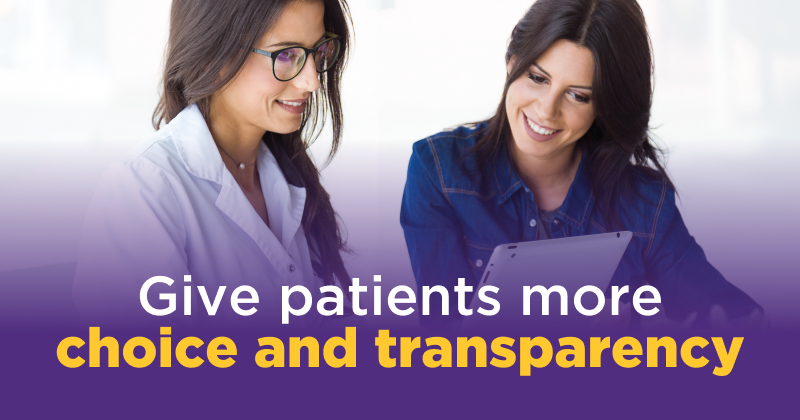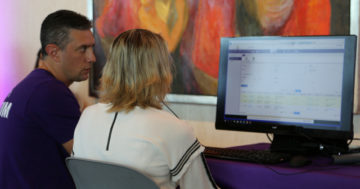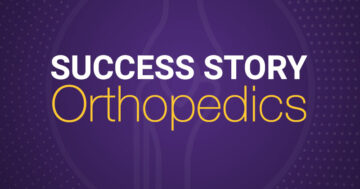2024 Healthcare Payment Trends: How Providers Can Meet Patient Expectations

Discover how ModMed Pay gives patients more choices and helps streamline billing for your team
As healthcare continues to evolve, providers face new challenges related to patient expectations of cost and payment options.
Overall, patients are taking a more active role in researching costs, seeking price transparency, and expecting convenient and efficient payment options. These trends are impacted by market forces in the healthcare industry and a larger trend toward consumer empowerment in all purchasing and financial decisions.
Against this backdrop, providers can position their practices to offer higher patient satisfaction, while protecting revenue during a period of industry-wide financial pressures. With ModMed® Pay, you can offer patients multiple ways to pay, while streamlining the way your practice tracks billing and transactions.
Here, we’ll discuss how ModMed Pay could help you align with patient expectations.
Patients are researching healthcare costs
Patients are taking a more active role in researching prices and expecting price transparency. With rising healthcare costs and other financial burdens, a clear view of care costs is key.
According to the 2022 Trends in Healthcare Payments annual report from JPMorgan, more than 40% of patients have used the online pricing information from their hospital or health system.1
The trend is fueled by the accessibility of information online, allowing people to compare prices and make informed decisions about almost any purchase or expense. For example, you wouldn’t find it surprising if someone told you they went online to research the cost of a new car, dealerships in the area, and auto loan rates.
Healthcare costs are being similarly scrutinized. Patients want to know in advance the estimated costs of procedures, treatments and medications, including what they’ll pay up front or out of pocket. When they have this information, they can seek out the most affordable options, negotiate payment terms, and manage payment options in ways that work for them.
By providing price transparency and multiple payment options, healthcare providers can empower patients to make informed decisions about their care and help alleviate some of the financial stress associated with payments.
Patients prefer electronic payment options
A high preference for electronic and self-service payment options aligns with an overall trend toward healthcare digitization. JPMorgan reports 73% of consumers prefer to pay medical bills online, compared to in-person, phone and mail options.2
Preferences for online payments make sense, considering their convenience and efficiency. They can also help provide a sense of control by making it easier for patients to view and manage bills, review their statements, and track payment history. This may reduce the potential for disputes, misunderstandings or dissatisfaction.
For example, ModMed Pay offers payment options like text to pay, online bill payment, Patient Portal payments, payment plans and automatic card-on-file payments. Patients also have the ability to save cards on file, supporting faster, easier payments for everyone.
Transactions automatically sync to Practice Management and patient accounts, reducing the number of manual tasks for your staff. You can manage finances in real time by viewing transaction statuses in the ModMed Pay dashboard.
By offering ModMed Pay, medical practices can help increase patient satisfaction and reduce the administrative burden associated with manual payment collection. Automated payment options can help billing and revenue teams be more efficient.
Demand for contactless payments is growing
Patients are increasingly expecting the convenience of contactless payment methods. The global market value for these payments is expected to grow from $34.6 billion in 2021 to an estimated $164.2 billion by 2030.3
Contactless payments remove the physical contact between a patient’s payment method, like a credit card or smartphone, and the point of sale. They use radio frequency identification (RFID) technology and near-field communication (NFC) to enable secure transactions through tap-and-go or wave-and-pay methods.
Adopting contactless payments could help speed payment processes, enhance patient engagement strategies, and increase patient satisfaction.
To collect contactless in-office payments, you can use our modern terminal options. Another way to achieve these benefits is with ModMed Pay and our patient app. Patients may be able to skip the front desk entirely, checking in and paying copays and balances with their phones.
Securing payment is more important than ever
In recent years, physicians have been more empowered to monitor their practice’s financial trends. Challenges have dotted the landscape, including a shift to value-based care and changing reimbursement models, increased administrative burdens due to labor shortages, and market forces like the consolidation of healthcare systems and the rise of corporate medicine.
All of it leads to an important takeaway: Collecting payments efficiently and on time is more crucial than ever.
With ModMed Pay, you can cater to changing patient expectations with multiple payment options.
Keeping cards on file and automating payment plans can help provide a seamless and hassle-free experience. In turn, this may increase the likelihood of receiving payments promptly, contributing to your practice’s financial well-being.
ModMed Pay also automatically checks with the issuing bank for updated card details. If new card information is found, it’s updated in the system. The payment is automatically retried, without any user involvement.
These features help physicians stay focused on delivering high-quality care, while helping streamline payment management. For more on how you can meet the demands of patient payment expectations, book a demo to see ModMed Pay in action.
1. Trends in Healthcare Payments, JPMorgan, question 1.3, page 24.
2. Trends in Healthcare Payments, JPMorgan, question 1.10, page 28.
3. Contactless Payment Market Size, Share & Trends Analysis Report by Type (Smartphone Based Payments, Card Based Payments) by Application (Retail, Transportation, Healthcare, Hospitality), by Region, and Segment Forecasts, 2022–2030, GrandView Research (2022 December 8).
This blog is intended for informational purposes only and does not constitute legal or medical advice. Please consult with your legal counsel and other qualified advisors to ensure compliance with applicable laws, regulations and standards.


